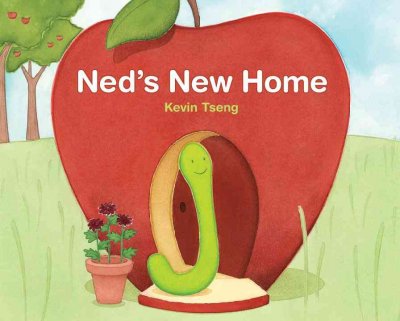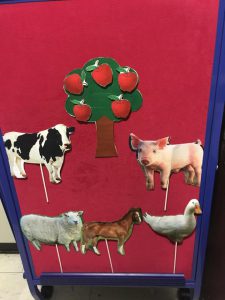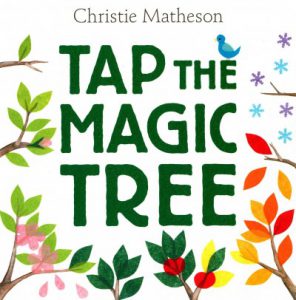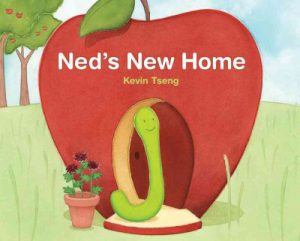
“Behavior is communication. Change the environment and behaviors will change,” Lana David, Autism Unites
Sensory Storytime is a fun, interactive, educational storytime designed for preschool age children with autism and/or sensory challenges. It involves books, songs, movement and therapeutic play that incorporate the five senses.
If you would like to learn more about Sensory Storytime and how it differs from a traditional storytime, please click here: Sensory Storytime.
Winter Session – 2nd Meeting
THEME: APPLES
Stories
The books chosen for Sensory Storytime are the same books we would choose for a toddler or preschool storytime. They need to be colorful with simple text and a well-defined concept or a linear, easy-to-follow story. If we have a group of children who have difficulty sitting through even a few pages, we can paraphrase the text or use props such as handheld puppets to encourage engagement.
Listed below are two books that were used for the second storytime of our winter session. Click onto the images or the titles to find them in our library catalog.
In Christie Matheson’s, Tap the Magic Tree, the story begins with a bare brown tree. Tap that tree, turn the page, and a green leaf has sprouted! Tap again—one, two, three, four—and four more leaves have grown on the next page. As you pat, clap, wiggle, jiggle through the pages of this book you see blossoms bloom, apples grow, and leaves swirl away with the autumn breeze. This was a great interactive story which invited a tactile response from the children and provided a counting & sensory experience throughout.
Ned’s New Home by Kevin Tseng begins with a worm named Ned who has to move when his apple begins to rot. He searches for another fruit to call home. He tries a pear, but that isn’t quite right. A watermelon isn’t perfect either. A pile of blueberries? All wrong! Will any other fruit make Ned feel at home again? Great visuals and simple, straightforward text make this a good choice for Sensory Storytime. Plus it does have a happy ending!
Flannelboard
“Five Little Apples”

Five little apples hung in a tree
The farmer wasn’t looking.
So guess who came to eat?
A cow! Munch, munch, munch!
(horse, pig, duck, sheep)
Now the tree is bare
There are no more apples there
But when next fall comes around
Guess who’ll be there!
The cow, horse, pig, duck and sheep!
Movement Song
Put Your Apple in the Air
(sung to the tune of “If You’re Happy & You Know It”)
Paper apples were passed out to the children.
Put your apple in the air, in the air,
Put your apple in the air, in the air.
Put your apple in the air,
Hold it high and leave it there,
Put your apple in the air, in the air!
Repeat verse above replacing air with nose & back (see below)
Put your apple on your nose
Now reach down and touch your toes
Put your apple on your back
Now please lay it on your lap
Reciprocal and/or Tactile Songs & Activities
Hello Everybody How Are You?
Hello everybody, how are you? How are you?
Hello there ________ (child’s name)
How are you today?
Roll the Ball Game
(reiprocol activity using a textured ball)
(Sing to tune of Row, Row, Row Your Boat)
Roll, roll, roll the ball (roll ball to specific child while singing)
Roll the ball to ________ (child’s name)
(Repeat child’s name 3X) ________ ________ _______,
Roll the ball to me (wait for child to roll the ball back with help from parent/caregiver)
Bean Bag Rock
(fine and gross motor skill activity using weighted bean bags)
- Weighted bean bags are passed out to each child.

- We generally use the Bean Bag Rock song/activity which is #3 on the bean bag activities & coordination skills CD (see below).

- Children follow the song’s instructions with help from a parent/caregiver or the storytime leader.
Bean Bag Rock (abbreviated lyrics)
Shake, shake, shake your beanbag
Come on, come on shake your beanbag.
Shake, shake, shake your beanbag
Shake your beanbag, don’t let it drop,
Let’s all do the beanbag rock.
- The song continues with the children being instructed to place the beanbag on various body parts (knee, head, toe, elbow) and also asks the children to hold the beanbag up high and down low.
- The movements help with body identification, developing fine and gross motor skills and with following directions.
Closing Songs
We try to maintain consistency with the songs and activities we use in our Sensory Storytime sessions. The repetition builds familiarity and provides the predictability children with autism require. Sessions generally last 5-6 weeks with one meeting a week.
Two universally known songs that are always big hits are Twinkle, Twinkle Little Star and Itsy Bitsy Spider. The finger movements used with the songs help build fine motor skills and enhance focus.
Click here for video: Twinkle, Twinkle Little Star
Click here for video: Itsy Bitsy Spider
Goodbye Friends (in sign)
Sung to the tune of Goodnight Ladies
Goodbye friends, goodbye friends, goodbye friends
It’s time to say goodbye. Click here for video: Goodbye Friends
FREE PLAY
Each Sensory Storytime ends with roughly 20 minutes of free play. For free play, we pull out some therapeutic play materials to facilitate sensory and interactive play. See the photographs below for examples of what we use:



Extend the Fun and Learning
Extend the fun at home by checking out one of our Sensory Storytime kits. Each kit is themed and contains 2-3 books, a sensory toy and an activity and/or music CD. The kits are housed at Lamanda Park Branch Library but can be placed on hold and sent to a Pasadena Public Library location of your choice. Click here for a list of themes: Sensory Storytime Kit.

